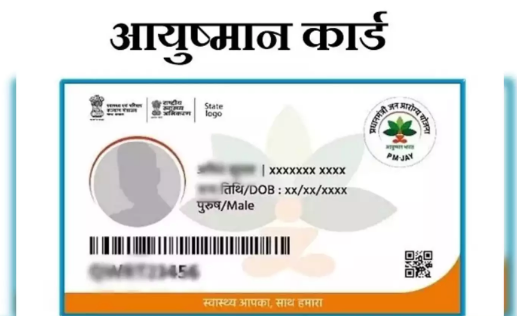Introduction
In an era defined by rapid technological advancements and information overload, digital news alerts have emerged as a vital tool for staying informed. These alerts, delivered through various digital platforms such as mobile applications, email, and social media, provide users with real-time updates on breaking news, events, and developments across the globe. With the proliferation of smartphones and the internet, digital news alerts have become an integral part of everyday life for millions of individuals worldwide. However, as their popularity continues to soar, it is crucial to examine the implications and impact of these alerts on individuals, society, and the media landscape.
Understanding Digital News Alerts
Digital news alerts serve as a mechanism to deliver timely information directly to users’ devices. They are typically customizable, allowing users to select their preferences based on topics of interest, geographic locations, or specific keywords. Whether it’s updates on politics, sports, finance, or entertainment, users can tailor their news alerts to suit their preferences and stay informed about the latest developments in their areas of interest.
The delivery of digital news alerts can vary across platforms. Some apps send push notifications to users’ smartphones, ensuring immediate attention to breaking news stories. Others utilize email newsletters or social media feeds to disseminate updates to their audience. The ubiquity of smartphones and the internet has made accessing these alerts easier than ever before, allowing users to stay connected to the news cycle regardless of their location or time zone.
Impact on Information Consumption Patterns
One of the most significant impacts of digital news alerts is their influence on information consumption patterns. In today’s fast-paced world, where time is of the essence, many individuals rely on these alerts to stay informed without having to actively seek out news updates. The convenience of receiving real-time notifications directly to their devices enables users to stay abreast of current events effortlessly.
However, this convenience comes with its own set of challenges. The constant influx of news alerts can lead to information overload, making it difficult for individuals to discern the most relevant or credible sources amidst the noise. Moreover, the relentless stream of notifications can contribute to heightened stress levels and feelings of anxiety, particularly when bombarded with negative or distressing news stories.
Furthermore, the personalized nature of digital news alerts can create echo chambers, where individuals are only exposed to information that aligns with their existing beliefs and perspectives. This phenomenon can contribute to polarization and the spread of misinformation, as users may be less likely to encounter diverse viewpoints or alternative narratives.
Nevertheless, when used discerningly, digital news alerts can empower individuals to stay informed and engaged with the world around them. By curating their alerts from reputable sources and diverse perspectives, users can broaden their understanding of complex issues and make more informed decisions as active citizens.
Impact on Media Consumption Habits
The rise of digital news alerts has also had a profound impact on traditional media consumption habits. As more consumers turn to digital platforms for their news updates, traditional media outlets have had to adapt their strategies to remain relevant in an increasingly competitive landscape. Many newspapers, magazines, and broadcast networks now offer their own mobile apps or email newsletters with push notification capabilities to reach audiences on-the-go.
Additionally, the 24-hour news cycle fueled by digital news alerts has led to a heightened emphasis on immediacy and sensationalism in journalism. With the pressure to break stories first and capture audiences’ attention, some media organizations may prioritize speed over accuracy, leading to the spread of misinformation or incomplete reporting. This phenomenon, known as “clickbait,” can erode trust in the media and undermine the public’s confidence in the veracity of news sources.
However, digital news alerts also present opportunities for media outlets to engage with their audience in new and innovative ways. By leveraging push notifications and social media platforms, news organizations can deliver targeted content directly to users based on their interests and preferences. This personalized approach not only enhances user experience but also fosters a sense of loyalty and connection between audiences and news brands.
Furthermore, digital news alerts enable media outlets to reach wider audiences beyond their traditional geographic boundaries. With the ability to deliver updates instantaneously to users around the world, news organizations can extend their global reach and amplify their impact on a scale previously unimaginable.
Impact on Society and Democracy
The proliferation of digital news alerts has implications beyond individual consumption habits and media dynamics; it also shapes societal discourse and democratic processes. In an age where information is power, the ability to control the narrative and shape public opinion through digital channels is increasingly significant.
On one hand, digital news alerts have the potential to enhance civic engagement by keeping citizens informed about important issues and events that affect their lives. By providing real-time updates on government policies, elections, and social movements, these alerts enable individuals to participate more actively in the democratic process and hold elected officials accountable.
However, the unchecked spread of misinformation and disinformation through digital news alerts poses a threat to the fabric of democracy. False or misleading information disseminated through these channels can manipulate public opinion, sow division, and undermine trust in democratic institutions. The phenomenon of “fake news” has become a pervasive challenge in the digital age, amplified by the rapid dissemination of unverified information through social media and other online platforms.
Moreover, the personalized nature of digital news alerts can contribute to the fragmentation of society along ideological lines. As individuals are exposed primarily to news that reinforces their existing beliefs and biases, the potential for meaningful dialogue and constructive debate diminishes. This echo chamber effect can exacerbate polarization and hinder efforts to find common ground on contentious issues facing society.
Addressing the Challenges
To mitigate the negative consequences associated with digital news alerts while maximizing their potential benefits, concerted efforts are needed from various stakeholders, including technology companies, media organizations, policymakers, and individual users.
Technology companies must prioritize transparency and accountability in the algorithms that power digital news alerts, ensuring that content prioritization is based on relevance, credibility, and diversity of perspectives rather than simply maximizing engagement metrics. Moreover, measures should be implemented to combat the spread of misinformation and disinformation through robust fact-checking mechanisms and user education initiatives.
Media organizations play a crucial role in upholding journalistic integrity and ethics in the digital age. By adhering to rigorous editorial standards, verifying sources, and providing context and analysis alongside breaking news updates, news outlets can foster trust and credibility with their audience. Additionally, collaboration and knowledge-sharing among media organizations can help counter the spread of misinformation and promote a more informed public discourse.
Policymakers must also recognize the importance of regulating digital platforms to ensure responsible content moderation and safeguard against the harmful effects of misinformation. Legislation and regulatory frameworks should be developed to hold tech companies accountable for the content shared on their platforms while respecting principles of free speech and expression.
Individual users bear a responsibility to critically evaluate the news they consume and engage with diverse perspectives beyond their echo chambers. By practicing media literacy skills, fact-checking information before sharing it, and being mindful of the potential biases inherent in digital news alerts, users can contribute to a healthier information ecosystem.
Conclusion
Digital news alerts have revolutionized the way we consume and engage with information, offering unparalleled convenience and immediacy in accessing breaking news updates. However, their widespread adoption has also raised concerns about information overload, polarization, and the spread of misinformation.
As we navigate the complexities of the digital age, it is imperative that we approach digital news alerts with a critical lens, mindful of their potential impact on individuals, society, and democracy. By fostering transparency, accountability, and media literacy, we can harness the power of digital news alerts to promote informed citizenship, foster constructive dialogue, and uphold the principles of a free and democratic society.
ReadMore: Android Architecture: A Comprehensive Overview Its Layers and Functions – Techporfit
Frequently Asked Questions (FAQ) About Digital News Alerts

- What are digital news alerts?
- Digital news alerts are notifications delivered through various digital platforms such as mobile applications, email, and social media, providing users with real-time updates on breaking news, events, and developments.
- How do digital news alerts work?
- Users can customize their digital news alerts based on topics of interest, geographic locations, or specific keywords. Once configured, users receive notifications directly to their devices whenever there’s a newsworthy event or update matching their preferences.
- What types of platforms offer digital news alerts?
- Digital news alerts are available on a wide range of platforms, including mobile apps, email newsletters, and social media platforms such as Twitter and Facebook. Many news organizations also offer their own apps with push notification capabilities.
- Are digital news alerts customizable?
- Yes, digital news alerts are highly customizable. Users can select their preferences, including topics, locations, and keywords, to tailor the alerts to their interests and preferences.
- Are digital news alerts free to use?
- In most cases, digital news alerts are free to use. Many news organizations offer their apps and alerts free of charge, although some may offer premium features or subscription options for additional benefits.
- Can I receive digital news alerts from multiple sources?
- Yes, users can typically subscribe to digital news alerts from multiple sources simultaneously. This allows users to stay informed about a diverse range of topics and perspectives.
- How often will I receive digital news alerts?
- The frequency of digital news alerts depends on the volume of breaking news and the user’s preferences. Users can typically adjust the frequency of alerts or set quiet hours to avoid receiving notifications during specific times.
- Can I control the types of news alerts I receive?
- Yes, users have control over the types of news alerts they receive. They can specify their preferences for topics, locations, and keywords to ensure they only receive notifications relevant to their interests.
- Are digital news alerts reliable sources of information?
- Digital news alerts can be reliable sources of information, especially when sourced from reputable news organizations. However, users should exercise critical thinking and verify information from multiple sources, especially when dealing with breaking news events.
- Can I turn off digital news alerts?
- Yes, users can usually turn off or adjust their digital news alert settings at any time. This allows users to manage their notifications and avoid information overload when needed.
- Do digital news alerts contribute to information overload?
- While digital news alerts provide timely updates, they can contribute to information overload if users receive too many notifications or fail to manage their preferences effectively. It’s essential for users to strike a balance and prioritize the most relevant updates.
- Can digital news alerts be personalized?
- Yes, digital news alerts are highly personalized. Users can customize their preferences based on their interests, ensuring they receive updates on topics that matter most to them.
- Are digital news alerts secure?
- Digital news alerts sent through reputable platforms are generally secure. However, users should exercise caution when clicking on links or downloading attachments included in alerts, as they may be potential targets for phishing attacks or malware.
- Can I unsubscribe from digital news alerts?
- Yes, users can typically unsubscribe from digital news alerts at any time. Most platforms offer easy-to-find settings or options to manage subscriptions and notifications.
- How can I ensure I receive accurate information through digital news alerts?
- To ensure accuracy, users should subscribe to alerts from trusted news sources known for their credibility and fact-checking practices. Additionally, cross-referencing information from multiple sources can help verify its accuracy before sharing or acting upon it.
ReadMore: Fundamentals of Software Development Life Cycle: Unveiling the Core Concepts – Techporfit
SUGGESTION
There are several compelling reasons why individuals would choose to read your content on digital news alerts:

- Stay Informed: Our content provides valuable insights into the significance and impact of digital news alerts in today’s information age. Readers seeking to stay informed about technological advancements and their implications will find your content relevant and engaging.
- Understanding Technology: In a rapidly evolving digital landscape, many individuals are interested in understanding how technology shapes various aspects of their lives. Your content delves into the workings of digital news alerts, offering readers a deeper understanding of this technological phenomenon.
- Navigating Information Overload: With the abundance of information available online, navigating through the noise can be challenging. Your content offers practical tips and insights on how to effectively manage digital news alerts to avoid information overload and stay well-informed without feeling overwhelmed.
- Media Consumption Habits: For those interested in media consumption habits and trends, your content provides valuable analysis on how digital news alerts have reshaped traditional media consumption patterns. Readers seeking to understand the evolving media landscape will find your insights enlightening.
- Impact on Society: Your content explores the broader societal implications of digital news alerts, including their influence on democracy, civic engagement, and social discourse. Readers interested in the intersection of technology and society will find your perspectives thought-provoking and informative.
- Practical Advice: Your content offers practical advice on how individuals, media organizations, and policymakers can address the challenges associated with digital news alerts while maximizing their benefits. Readers seeking actionable strategies for navigating the digital age will find your suggestions valuable and actionable.
Overall, your content offers a comprehensive exploration of digital news alerts, appealing to a diverse audience interested in technology, media, society, and the evolving dynamics of information consumption in the digital age.






